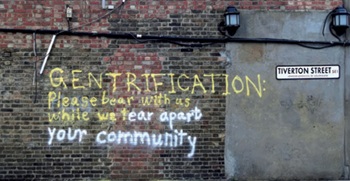Condition Report
Contents |
[edit] Introduction
A Condition Report (or Home Condition Report HCR) is a type of building survey. Building surveys are a means of providing an evaluation of a property’s condition. They may be prepared for individual homeowners, home buyers or for investors in property portfolios to help inform future investments.
Homebuyer Reports are a type of condition report that was introduced in 2009 and follow a format specified by the Royal Institution of Chartered Surveyors (RICS). They are sometimes referred to as a Homebuyer Survey.
[edit] Condition Report specifics
A Condition Report is one of three types of Homebuyer Surveys that can be undertaken by Surveyors. It is referred to as the Level One survey by RICS; Level Two is the Homebuyer Report and Level Three is the Building Survey.
For more information, see Homebuyer Report or Building Survey.
As the lowest cost option, a Condition Report describes the condition of the property, identifies any risks and highlights any urgent defects or legal issues that need to be addressed. It also provides information regarding the location, local environment and the recorded energy efficiency for the property.
Unlike the Homebuyer Report or Building Survey, the Condition Report does not offer recommendations or advice (or estimates for repair costs) regarding negative issues, should any be found. It also excludes valuation of the property, although the surveyor may be able to offer this as an additional service.
Due to its scope, a Condition Report is generally more suitable for conventional homes or properties less than five years old. The property should be in relatively good condition constructed from commonly used materials and with an up-to-date maintenance history that is readily available. This type of report is not appropriate for older buildings, properties with a history of defects or buildings that have been constructed in an unconventional manner.
[edit] How is a Condition Report performed?
During a Condition Report, the surveyor takes a visual inspection only of the building and its services, including:
- Inside and outside of the main building and any permanent outbuildings.
- Parts of the electricity, gas/oil, water heating and drainage services that can be seen (note that these utilities will not be tested during the Condition Report).
- Roofs, chimneys and other surfaces on the outside of the building.
- Floor surfaces and under-floor spaces that can be safely accessed.
[edit] The rating system
Ratings in a Condition Report are broken down into a three tier traffic light system. This same system is used for all three types of Homebuyers Surveys by RICS.
- Condition rating 1 (GREEN). There is no need for repair, but the property should be regularly maintained.
- Condition rating 2 (AMBER). There are some areas with defects that require replacement or repair, but these actions are not urgent. While these defects should not have an impact on the value of the property, they are serious defects that should be maintained and eventually repaired.
- Condition rating 3 (RED). These defects are serious and in need of urgent investigation, repair or replacement. Their condition could have an impact on the overall purchase of the property and could be factored into renegotiation of the contract due to their possible cost.
There is one additional category, NI, which represents elements that were not inspected (due to the limitations of a visual inspection).
In addition to the NI rating, the surveyor should make a note of any part of the property that should have been included but could not. The report should record concerns the surveyor may have had regarding the omission and include any recommendations for additional investigations.
A sample Condition Report is available as a downloadable PDF from the RICS website.
[edit] Related articles on Designing Buildings
- Building survey.
- Change control procedure for building design and construction.
- Energy certificates for buildings
- Homebuyer Report
- Home report
- Property valuation.
- Royal Institution of Chartered Surveyors RICS
- Surveyor.
- Technical due diligence for development sites.
[edit] External resources
Featured articles and news
A threat to the creativity that makes London special.
How can digital twins boost profitability within construction?
A brief description of a smart construction dashboard, collecting as-built data, as a s site changes forming an accurate digital twin.
Unlocking surplus public defence land and more to speed up the delivery of housing.
The Planning and Infrastructure bill oulined
With reactions from IHBC and others on its potential impacts.
Farnborough College Unveils its Half-house for Sustainable Construction Training.
Spring Statement 2025 with reactions from industry
Confirming previously announced funding, and welfare changes amid adjusted growth forecast.
Scottish Government responds to Grenfell report
As fund for unsafe cladding assessments is launched.
CLC and BSR process map for HRB approvals
One of the initial outputs of their weekly BSR meetings.
Architects Academy at an insulation manufacturing facility
Programme of technical engagement for aspiring designers.
Building Safety Levy technical consultation response
Details of the planned levy now due in 2026.
Great British Energy install solar on school and NHS sites
200 schools and 200 NHS sites to get solar systems, as first project of the newly formed government initiative.
600 million for 60,000 more skilled construction workers
Announced by Treasury ahead of the Spring Statement.
The restoration of the novelist’s birthplace in Eastwood.
Life Critical Fire Safety External Wall System LCFS EWS
Breaking down what is meant by this now often used term.
PAC report on the Remediation of Dangerous Cladding
Recommendations on workforce, transparency, support, insurance, funding, fraud and mismanagement.
New towns, expanded settlements and housing delivery
Modular inquiry asks if new towns and expanded settlements are an effective means of delivering housing.























